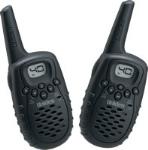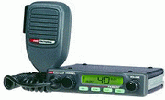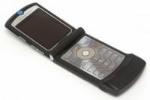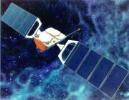|
Outback
Communications
If you
ever travel out in the back of the boonies then communications are
no doubt something you will want to consider. Many people travel
away from the main spread of population to specifically make
themselves uncontactable, but with the unpopulated parts of
Australia being inherently dangerous often people forget their might
be a time when they need to contact someone else, and might need to
make that contact urgently. Outback communications are something
that are essentially expensive, but how much emphasis does one place
on a human life (or multiple lives). Think also about the fact it
may not be your life or one of your families you save, it may be the
life of someone less prepared than yourself.
In today's world complex world there are usually two main
options to consider, New or Used. If your considering buying any
piece of equipment that has been used before it would be highly
recommended to have it checked over by a qualified technician well
before you plan to go away to ensure the equipment works properly.
Unfortunately the options of what type of communications
equipment to buy is large and some people might want to consider
more than one option. Often the decision on what type of equipment
to buy will rest with where you are planning on travelling to.
Hopefully the information contained below will help to make your
decision a little easier. An important point to remember is just
because you own the equipment there is no excuse for not learning
how to use the equipment. Don't limit this knowledge to one person
either. Share it round since it may be the case that the only person
who knows how to use the equipment isn't in a position to use it.
One of the biggest problems I have found in the years I have been
working in the communications industry is the customers lack of
understanding of system limitations of their communications devices.
27MHz & UHF
CB
 The first devices on the list are those little
Little 1/2 Watt or 1 Watt handhelds that every man and his dog seem
to sell. I equate these handhelds to the old walkie talkies kids
used to get for Christmas. That's about as well as they work as
well. These types of devices are great for the kids when wandering
around the campsite, or for directing someone in a car down a
difficult track, but that's about where the usefulness of these
devices ends. Sometimes depending on the frequency band of the
handheld, they may also be compatible with a UHF CB in a car, but do
your research as there are two main bands these handhelds operate
in.
The first devices on the list are those little
Little 1/2 Watt or 1 Watt handhelds that every man and his dog seem
to sell. I equate these handhelds to the old walkie talkies kids
used to get for Christmas. That's about as well as they work as
well. These types of devices are great for the kids when wandering
around the campsite, or for directing someone in a car down a
difficult track, but that's about where the usefulness of these
devices ends. Sometimes depending on the frequency band of the
handheld, they may also be compatible with a UHF CB in a car, but do
your research as there are two main bands these handhelds operate
in.
Expect to pay anywhere between about $30 and $120 for a pair
of these handhelds.
 The next communications device, and probably the most popular in the
world of travelling is the CB or Citizens Band radio. These radios
come in two bands AM in the 27 MHz spectrum or UHF in the 477 MHz
spectrum. AM CB's were the original CB devices in Australia and
there are still a few in use out there, but UHF is the new standard
that appears to have taken off. UHF CB radios are a lot quieter and
user friendly providing a level of ease that almost anyone
The next communications device, and probably the most popular in the
world of travelling is the CB or Citizens Band radio. These radios
come in two bands AM in the 27 MHz spectrum or UHF in the 477 MHz
spectrum. AM CB's were the original CB devices in Australia and
there are still a few in use out there, but UHF is the new standard
that appears to have taken off. UHF CB radios are a lot quieter and
user friendly providing a level of ease that almost anyone travelling with you can simply pick a CB up and use it. CB radios
have a slightly higher power level of 5 watts and as a result with a
good installation in the car and a decent antenna tend to travel a
bit further. UHF CB's also have the ability to speak further with
the aid of a repeater, however these repeaters can sometimes be few
and far between and shouldn't be relied on. The AM or UHF CB is an
excellent radio for use when travelling with a club or in a convoy
and will normally work over a distance of a couple of KM's, more in
ideal conditions.
travelling with you can simply pick a CB up and use it. CB radios
have a slightly higher power level of 5 watts and as a result with a
good installation in the car and a decent antenna tend to travel a
bit further. UHF CB's also have the ability to speak further with
the aid of a repeater, however these repeaters can sometimes be few
and far between and shouldn't be relied on. The AM or UHF CB is an
excellent radio for use when travelling with a club or in a convoy
and will normally work over a distance of a couple of KM's, more in
ideal conditions.
 CB's are also available in 4 or 5 watt handheld models but your
mileage will be dramatically reduced on what you would get from an
in vehicle radio installation.
CB's are also available in 4 or 5 watt handheld models but your
mileage will be dramatically reduced on what you would get from an
in vehicle radio installation.
AM CB expect to pay anything between $10 for a second hand
unit on eBay to around $200 for a new unit (plus antennas and
mounting equipment).
UHF CB expect to pay anything between
around $50 for a second hand unit to over $500 for a new unit with
all the bells and whistles (plus antenna and mounting equipment).
Mobile Phones

These have to be the most used radio
communications device anywhere in the world. Almost everyone knows
how to use a mobile phone and most of us own at least one. Mobile
phones are great because they cover around 92% of the population.
Unfortunately for those of us who like to get away about 90% of our
population tends to live in populated areas around the Coast, which
equates to bugger all service most of the time when we are in the
bush. There are two main types of mobile phone services in Australia
GSM (Digital) and CDMA which is also digital, but operates
differently to GSM digital. Mobile phones are a fantastic
communications device as they offer direct dialling to almost
anywhere in the world when they are in service. When they drop out
of service from your own provider and are required to attempt to
contact emergency services they will look for a service from any
provider they can find.
GSM phones are great for a distance of up to 32 KM's
(sometimes less) from a cellular base site.
 CDMA phones have been known to work up to 250 KM's in ideal
conditions but they still rely on a cellular base station to make a
contact to the rest of the world. Telstra is now the only provider
of a CDMA service in Australia and plans to abandon it sometime in
2008 when it will be replaced with a new service.
CDMA phones have been known to work up to 250 KM's in ideal
conditions but they still rely on a cellular base station to make a
contact to the rest of the world. Telstra is now the only provider
of a CDMA service in Australia and plans to abandon it sometime in
2008 when it will be replaced with a new service.
Mobile phone prices vary from free to well over $1000
depending on what options and plans you take out with a service
provider. Service provider coverage footprints also differ from one
another, but on the whole they pretty much all cover the same areas.
Range on any mobile phone will also depend on the accessories
used such as in car kits with high gain antennas, or base station
mobile phones with fixed directional antennas.
Satellite phones

The world of Satellite phones is another
complex world with many options available. Australia has a number of
Satellite phone services with offerings from Globalstar, Iridium,
Inmarsat and Optus. Each service differs in the types of equipment
they offer which can include large installed equipment laptop style
equipment and handheld equipment.
The also have differing
operating costs, but they all provide similar services. All of the
services offer varying degrees of voice, fax and data
communications. All Satellite phone providers have blanket coverage
of the entire Australian continent and beyond. Some of the service
providers such as Optus have one stationary satellite sitting above
the country where as Globalstar have a virtual spiders web of
satellites that criss cross the skyline constantly to cover the
entire footprint of the earth, although when you register with
Globalstar you register for your phone to work in a specific area of
the world (such as within the Australian footprint), rather than
anywhere in the world at any time.
 Globalstar have been innovative in marketing satellite phones in
Australia having dropped call prices to around the same price as a
mobile phone call making their handsets much more economical for the
everyday traveller. Some of the providers also offer handsets with
the functionality to use the common GSM or CDMA network whilst
within mobile phone range, and only moving over to Satellite
services when the out of mobile phone service areas.
Globalstar have been innovative in marketing satellite phones in
Australia having dropped call prices to around the same price as a
mobile phone call making their handsets much more economical for the
everyday traveller. Some of the providers also offer handsets with
the functionality to use the common GSM or CDMA network whilst
within mobile phone range, and only moving over to Satellite
services when the out of mobile phone service areas.
 All
satellite systems rely on the phone being able to see the satellite.
In the open desert this usually isn't a problem with nothing between
the phone and the satellite so they usually work well. Some
satellite providers have holes in the coverage footprint so this is
important to know. One provider has no coverage around the corner
country at the border of NSW, QLD, SA. Satellite phones all have
differing levels of useability in cloud cover, smoke cover, dense
foliage cover, deep in canyons or valleys. Because satellites are
all line of site the basic theory is the less sky you can see
horizon to horizon, the less coverage you have. The quality of the
installation of any antenna is the direct problem of most satellite
phone reception problems. All
satellite systems rely on the phone being able to see the satellite.
In the open desert this usually isn't a problem with nothing between
the phone and the satellite so they usually work well. Some
satellite providers have holes in the coverage footprint so this is
important to know. One provider has no coverage around the corner
country at the border of NSW, QLD, SA. Satellite phones all have
differing levels of useability in cloud cover, smoke cover, dense
foliage cover, deep in canyons or valleys. Because satellites are
all line of site the basic theory is the less sky you can see
horizon to horizon, the less coverage you have. The quality of the
installation of any antenna is the direct problem of most satellite
phone reception problems.
Satellite phones range in price from around $300 for a second
hand unit to many thousands of dollars for a new units with all the
bells and whistles.
HF Radio

Many people are scared of HF because
they deem it too hard to operate. However with some of the newer
models on the market such as Codans NGT nothing could be further
from the truth. It is as easy as looking in a phone like directory
and pushing the PTT button. The radio does the rest for you.
With older HF units there is a little to know, but it is all
simple knowledge that is provided with a new radio and is easily
looked up when you need to use the radio. HF radios work basically
anywhere. They can speak over a distance of 3 metres up to many
thousands of KM's. HF radios work on a combination of a ground wave
and a sky wave hence why different frequencies have differing
results of different distances.
 HF radios can be used for talking like a conventional CB to friends,
RFDS base stations, and to make telephone calls. A number of
different networks are available for phone interconnect, or just use
it for the RFDS for emergencies only. For RFDS you will need an
outpost license, otherwise you will need to pay a membership fee to
a network (or buy both).
HF radios can be used for talking like a conventional CB to friends,
RFDS base stations, and to make telephone calls. A number of
different networks are available for phone interconnect, or just use
it for the RFDS for emergencies only. For RFDS you will need an
outpost license, otherwise you will need to pay a membership fee to
a network (or buy both).
The result of most HF radio reception problems are bad
installations. Simply put, people who think it can be installed like
a conventional CB radio. Nothing could be further from the truth. HF
needs to be installed properly, and needs to have specific things
done to ensure the best transmission and reception ability. It is a
bit of a complex art that shouldn't be left to the average auto
electrician, or even to any old 4wd
fitment centre or two way radio store. Remember just because someone
tells you they are an expert in the field doesn't mean they are.
HF Radios in Australia come from four major players. Codan,
Barrett, Q-Mac and Icom. Each have positives and negatives, but on
the whole there isn't a heck of a lot of difference between them.
HF Radios range from between $500 second hand to around $5000
new.
EPIRBs

EPIRBs are a radio transmitting device that
when activated transmit to a signal to a satellite and to
overpassing aircraft. In order to initially hit the satellite they
need to be out in a clear open area to get a good signal and a
position fix to the satellite. These devices work great out in the
open arid land, but are a bit touch and go in places like narrow
canyons where the view to the sky is limited.
One problem associated with EPIRBs is they are a one way
communications device meaning once you set it off you don't know how
long it will be till the signal is received by a satellite, and you
don't know how long it will be till someone will know, or be able to
get to your position. There is also no way of passing specific
details of your problem so you will need to wait till you can make
contact with someone in order to explain your difficulty.

EPIRB technology is currently undergoing a change with a
phasing out of the old 121.5 MHz system to a new 406 MHz frequency.
The new system has a registration system attached to it making it
possible to identify the owner of the EPIRB and assisting in false
activations. It is planned to completely do away with the old 121.5
MHz system in early 2009.
EPIRBS are around $300 - $1000 new and have a battery life of
approx 10 years.
Remember with any trip into an area where you are away from
civilisation it is important to regularly let someone know where you
are and how you are travelling. Have regular check in times so that
if you do go overdue a search party will have a smaller area to
start looking for you.
Thanks to Brain for this information |